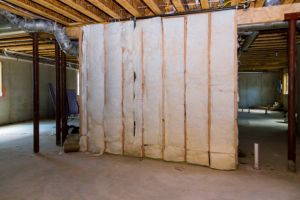Do you want to cut down on heating and cooling costs with just one simple step? It might be worth ensuring your home is well insulated, especially with spray foam insulation. Insulating your home properly can help you save money and make it more comfortable. The big question is: What part of your house should you start to insulate first?
What Areas in the home need insulation?
Air will find any entry or exit point to your home to come through. You should insulate your home to the greatest extent possible. This will prevent air from entering or escaping areas you don’t want air escaping from. Insulating a whole house can be costly. You should avoid areas that are susceptible to energy loss and air leakage. This will result in a higher return on your investment, as you will have lower energy bills. Having high quality insulation will also help you sell your home faster when the time comes.
Which part of a house do you need to insulate first?
Your crawlspace
Insulation is required in both ventilated crawl spaces and unventilated crawl spaces. Insulating pipes will protect them from freezing temperatures during winter. This helps maintain ductwork at the right temperature throughout each season. It can also help you save money in other ways!
Warmer pipes will result in hotter water. The ducts will keep the temperature constant, making heating and air conditioning more efficient. A well-insulated crawl space can protect you from pests and moisture.
Your attic
Hot air rises. In winter, heated air travels up and gets trapped in the attic. This is a waste of energy as attics don’t usually need to be heated. Hot air can sometimes escape the house entirely through the attic. On the other hand, hot air from outside enters during summer. The attic heats up, making it difficult to cool your lower floors.
exterior walls
Insulating exterior walls allows air-conditioned air to stay inside the home where it can cool it. This can reduce energy consumption in summer and also keep the winter heat in. All exterior walls should be insulated. This includes walls between living spaces, unheated spaces, and garages.
floors
You might also want to consider insulation for your floors. This will stop air from leaking into your home or between floors. If you want your home to be air-conditioned, this is an important area to insulate. This is even more critical if you live in unheated areas like basements or garages. It can also be used to add soundproofing between floors.
where else should i put insulation?
interior walls
If you’re wondering “Is internal wall insulation worthwhile?” The answer is yes. Insulating interior walls can help maintain a constant temperature between rooms. You can also soundproof between rooms, making your living space more comfortable.
![Home Insulation]() basements
basements
Insulating your basement can help you retain heat. This is especially true for basement floors. You can also create extra living space by insulating your basement floors.
how to check the insulation in your home
The temperature in your home can tell you if insulation is needed. Uneven temperatures could indicate that there isn’t enough insulation. Start by scheduling a home audit. A professional can inspect your home’s insulation and identify any problems when you are getting your home ready to list. They can also determine how much insulation you have, what type, and where it is located. This will allow them to create a plan to determine where additional insulation should be added or replaced.
You can also inspect the home yourself. To determine if the house is properly insulated, you will need to inspect it from all angles. It is also important to know what insulation type, R-value, thickness, or depth the insulation is. If you’re insulating a newly built home, the builder may have this information.
Usually, you can see the structural supports in an attic, wall, or floor near an unheated area. These areas should allow you to easily see the insulation type and measure its depth.
How do I insulate my home properly?
You can either hire someone to do the insulation installation or you could do it yourself. Sealing all areas with gaps is the first step. This will prevent air from leaking out and in the house.
Caulk can be used to seal cracks or areas that aren’t moving. Caulk can be used to seal cracks and areas between parts that don’t move, such as around window frames or doors. Weather-stripping is an option for areas that move like doors and windows.
Different areas of your home will need different insulation types. Blanket insulation is used to cover ceilings and studs in unfinished walls. For enclosed walls, loose-fill insulation might be a better choice.
Different insulation types may be required depending on whether you are insulating a new or older house. A professional may be required depending on the type and size of insulation you require.
Conclusion
You may not be able to insulate the entire house at once. This leaves you wondering which part of your home to insulate first. You can save money on electricity and have a more comfortable home by focusing your efforts on certain areas. Begin by improving your crawlspace. Call a reputable insulation expert today to get started on properly insulating your home.



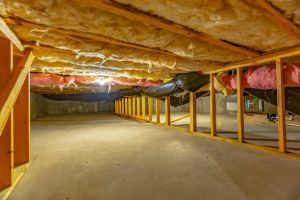
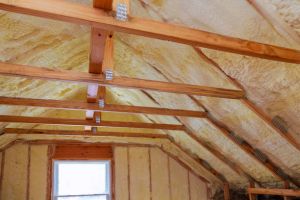
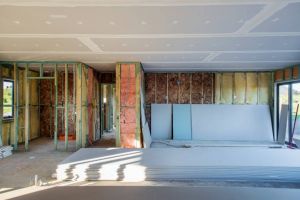
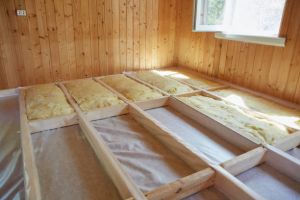
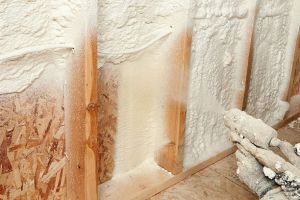 basements
basements